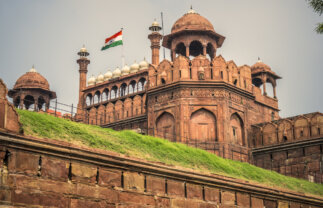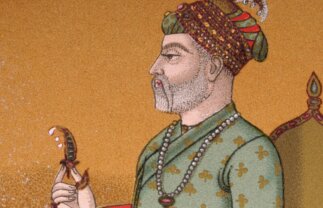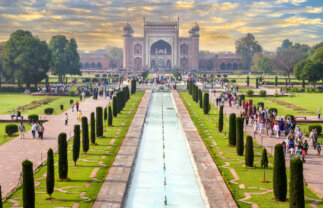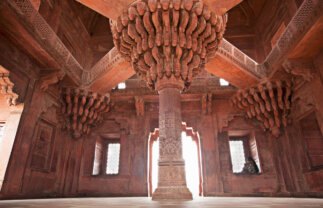
Cultural Tours in India: Legacy of the Mogul Empire
Wednesday 8 February 2023
India has a rich and diverse history that is reflected in its architecture, art, and culture. One of the most significant periods in India’s history is the Mogul Empire, which lasted from the 16th to the 19th century. During this time, India saw the rise of some of the greatest emperors and architects in history. As we shall see, much of groundwork for the golden period of Mogul rule was laid by Akbar the Great. In this blog post, we will detail how history and architecture guided holidays in India explore the wonderful heritage of the Mogul Empire.
The Mogul Dynasty

The Mogul (often written Mughal) Empire was founded by Babur in 1526 and lasted until 1857. During this time, India saw a golden age of cultural and architectural achievements, with the reign of Akbar the Great being one of the highlights. Akbar was known for his tolerance and acceptance of all religions, which was reflected in the architecture of his reign. He built the city of Fatehpur Sikri, near Agra, which reflected both Hindu and Muslim influences. Fatehpur Sikri is known for its red sandstone architecture and was designated the capital of his Mogul Empire. The residential and palace complex is now a UNESCO World Heritage site.
The revolutionary approaches to governance instigated by Akbar included appointing provincial governors who were given land to tax. They had to provide the Emperor with soldiers from their province and were periodically moved to govern a new province to prevent local power bases from being formed.
Akbar’s military conquests helped to expand the Mogul Empire to new heights. He conquered new territories, including parts of Afghanistan and the Deccan Plateau, and brought new resources and wealth to the empire.
Taj Mahal

Another important landmark of the Mogul Empire, often visited on over 50s escorted trips to India, is the Taj Mahal. This was built by Akbar’s grandson Shah Jahan as a memorial to his beloved wife Mumtaz Mahal. The Taj Mahal is one of the most famous buildings in the world and is considered one of the Seven Wonders of the Modern World. The white marble structure is a testament to the Mogul Empire’s architectural prowess.
Cultural Tours in India

Guided cultural and historical holidays in India typically include visits to Fatehpur Sikri, the Taj Mahal, and other important landmarks of the Mogul Empire. In addition to these visits, even cheap guided trips to India often include visits to other important historical sites, such as the Red Fort and Humayun’s Tomb in Delhi, as well as visits to local markets and traditional villages.
One of the benefits of cultural tours in India is that they offer a chance to experience the local culture and to learn about the history of the country from local experts. These tours are typically led by knowledgeable guides who are passionate about the history and culture of India and who are eager to share their knowledge with visitors. In addition, these trips often include opportunities to sample local cuisine, to participate in traditional dances and ceremonies, and to interact with local people.
In conclusion, India cultural trips are a great way to explore the country’s rich and diverse history. From the Mogul Empire to the British Raj and beyond, India has a rich and fascinating history.